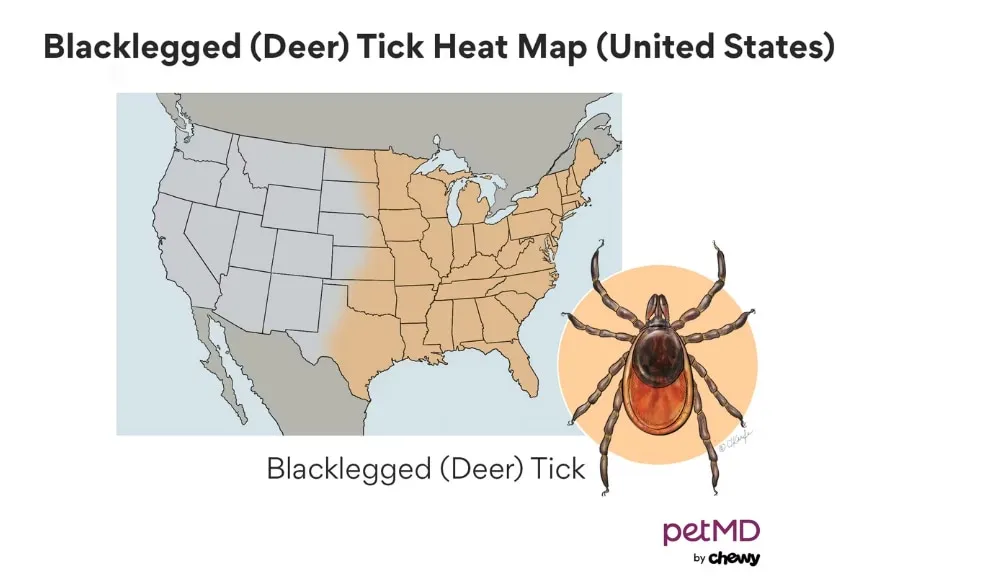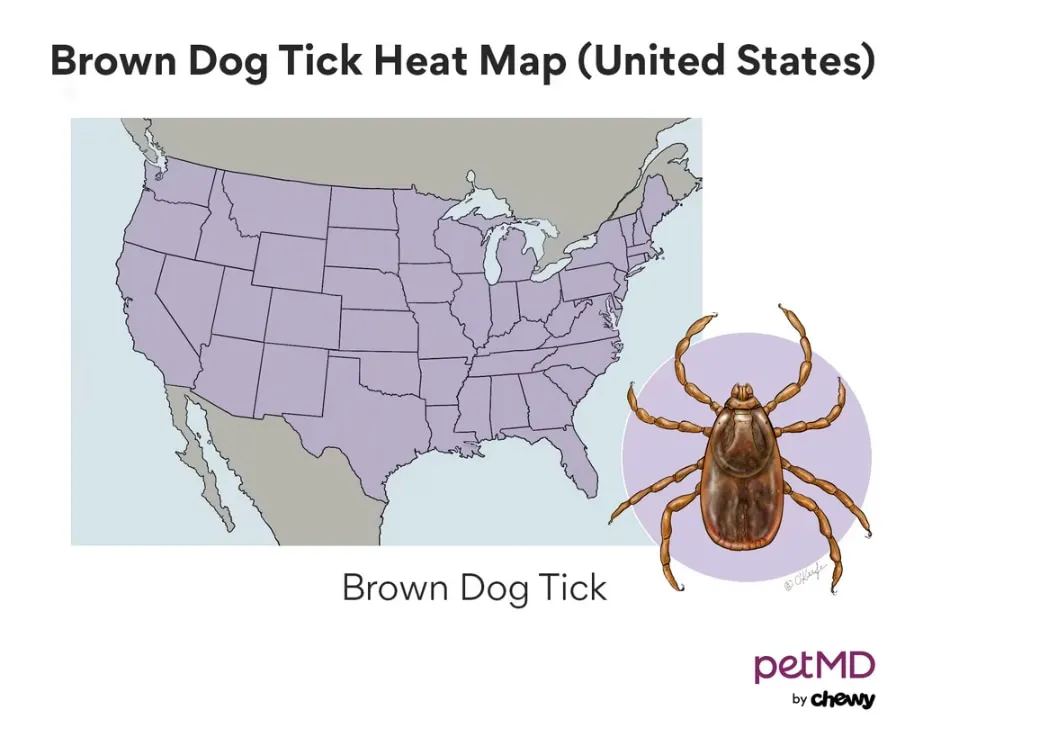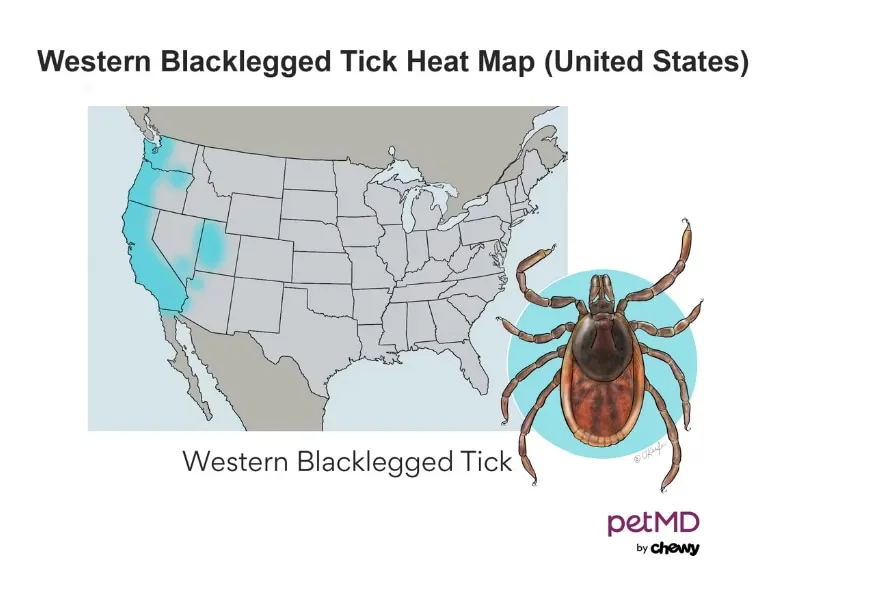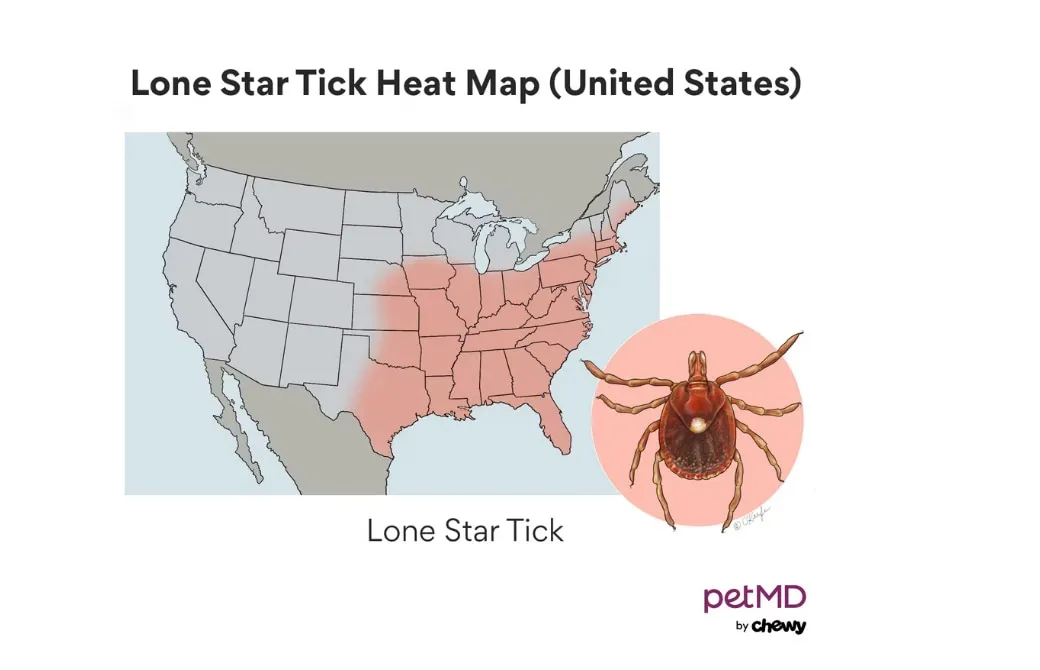Ensuring your dog is protected from fleas and ticks is a cornerstone of responsible pet ownership, significantly contributing to their overall health and happiness. Regular preventative care helps ward off potential health issues, making monthly flea and tick preventatives an essential part of your dog’s wellness routine. While many highly effective solutions require a veterinarian’s prescription, a growing number of reliable over-the-counter (OTC) options are available for pet parents seeking the Best Flea Medicine For Dogs Without Vet Prescription. This guide will explore these options, helping you make an informed choice to keep your canine companion pest-free.
Fleas and ticks are more than just an annoyance; these tiny parasites can pose serious health risks to your dog and even to your family. Understanding their impact and knowing how to effectively prevent them is crucial. This article delves into why prevention is vital, when to administer it, key factors to consider when choosing a product, and a detailed look at some of the most popular and effective over-the-counter flea and tick medicines available today. We’ll empower you with the knowledge to select the optimal chewable flea and tick for dogs non prescription or topical treatment, ensuring your dog stays healthy and comfortable year-round.
Why Is Flea and Tick Prevention Important for Dogs?
Fleas and ticks are classified as ectoparasites, meaning they are external pests that live on the surface of their host. For these parasites to survive and reproduce, they must bite their host and feed on their blood. These bites can have a direct and severe impact on your dog’s health.
The saliva from a flea bite alone can trigger intense itching, severe allergies, and even dermatitis in susceptible dogs. Heavy flea infestations can also lead to anemia, especially in puppies or small dogs. Tick bites present an even broader range of dangers, potentially causing localized infections, abscesses, paralysis, and in extreme cases, even death.
Beyond the immediate irritation and physical harm, fleas and ticks are notorious carriers and spreaders of various diseases to dogs. These can include Lyme disease, Ehrlichiosis, Anaplasmosis, Rocky Mountain spotted fever, and Babesiosis, all of which can lead to serious health complications if left untreated. Critically, some of these zoonotic diseases can also be transmitted from dogs to humans, underscoring the importance of rigorous flea and tick control to protect both your pet and your household.
When Do Dogs Need Flea and Tick Prevention?
Fleas and ticks are remarkably resilient and can thrive in diverse geographical areas and climates. While certain regions may experience peak parasite seasons, these pests can be a year-round threat in many places, even surviving indoors during colder months. Given that fleas and ticks can transmit diseases harmful to both dogs and humans, continuous prevention is paramount.
Veterinarians generally recommend initiating flea and tick prevention for puppies as early as 8 weeks of age, provided the product label confirms suitability for that age and weight. This proactive approach should then continue throughout your dog’s entire life, regardless of their age, breed, or perceived exposure risk. Consistent, year-round prevention offers the best defense against infestations and the health complications they bring.
Choosing the Best Flea and Tick Medicine for Dogs Without Vet Prescription
When selecting a flea and tick preventative, especially when looking for options without a vet prescription, it’s essential to understand the different types of products available. These solutions typically fall into categories such as pesticides, repellents, or growth inhibitors, each designed to combat pests at various life stages and prevent infestations.
While some products may only target fleas, many combination preventatives available over-the-counter offer broader protection against both fleas and ticks. These multi-action formulas often contain several active ingredients to effectively battle different types of external parasites. Some may even offer additional benefits, such as protection against mites (like those causing sarcoptic mange or how to heal ear mites in dogs) or chewing lice, though comprehensive protection against internal parasites like heartworms, roundworms, and hookworms usually requires a prescription product.
Even when choosing an OTC product, it’s always advisable to consult with your veterinarian. They can help ensure the product is a good fit for your dog’s specific needs and health profile. Always carefully review the product label to confirm:
- The product is formulated for dogs (and not cats, as some active ingredients can be toxic to felines).
- The product is appropriate for your dog’s weight range.
- The product effectively targets the specific parasites prevalent in your area (fleas, specific tick species).
- Any special administration instructions, such as whether it should be given with food.
- The frequency of application or administration.
- The expected onset of action.
- Guidelines on bathing your pet after application for topical products.
- Any potential safety concerns or common side effects.
- What steps to take in the event of an adverse reaction.
Here are other important factors to consider when choosing a flea medicine for dogs without a vet prescription:
1. Application Method
Over-the-counter flea and tick preventatives primarily come in two convenient forms:
- Oral: These are chewable tablets that your dog ingests, often flavored to be palatable.
- Topical: These are liquid solutions applied directly to your dog’s skin, typically between the shoulder blades or down the back.
Topical spot-on treatments can be an excellent choice for dogs that are picky eaters or have sensitive stomachs, as they bypass the digestive system. However, if you have young children or other pets in the household, you must exercise caution to prevent them from touching or licking the application site before the product has completely dried. Topical treatments may also be less ideal for dogs who frequently swim or require regular baths, as water exposure can sometimes diminish the product’s effectiveness.
Oral treatments, often administered like a treat, offer a simple and convenient option for many pet parents. If you opt for an oral medication, it’s wise to monitor your dog to ensure they consume the entire tablet and do not regurgitate it before it can be properly absorbed into their system. For effective protection, consider exploring various best flea pills for dogs without a vet prescription available on the market.
2. Geography
The prevalence and types of fleas and ticks can vary significantly by geographic location. Different regions harbor distinct local parasite populations.
Resources like the Companion Animal Parasite Council (capcvet.org) are invaluable for identifying the specific parasites prevalent in your area. This information allows you to choose an over-the-counter flea and tick product that offers targeted and comprehensive protection against the local threats your dog is most likely to encounter.
 Geographic distribution map of tick species affecting dogs in North America, highlighting various tick zones.
Geographic distribution map of tick species affecting dogs in North America, highlighting various tick zones.
 Detailed map showing common tick populations by region, crucial for choosing the best flea medicine for dogs without vet prescription.
Detailed map showing common tick populations by region, crucial for choosing the best flea medicine for dogs without vet prescription.
 Visual guide to different types of ticks found in various habitats, aiding in effective dog parasite control.
Visual guide to different types of ticks found in various habitats, aiding in effective dog parasite control.
 Infographic displaying prevalence of specific tick-borne diseases across different states for informed pet care.
Infographic displaying prevalence of specific tick-borne diseases across different states for informed pet care.
3. Access to the Outdoors
The amount of time your dog spends outdoors, and the types of environments they explore, significantly influence their risk of exposure to fleas and ticks. Places like dog parks, hiking trails, wooded areas, public parks, dense bushes, and even your own backyard can serve as havens for these parasites. Dogs that frequently spend time in heavily wooded regions or areas frequented by other animals and dogs naturally face a higher risk of exposure.
However, even if your dog primarily stays indoors, complete protection is still essential. Fleas can easily find their way into your home through window screens, on other pets that venture outside, or even hitch a ride on your clothing or shoes. For this reason, veterinarians consistently recommend year-round flea and tick prevention for all dogs, regardless of how much time they spend outdoors.
4. MDR-1 Gene
Certain dog breeds, including Collies, Australian Shepherds, and Shetland Sheepdogs, are known to carry a specific gene mutation called MDR-1 (Multidrug Resistance 1). This mutation can impair their ability to properly metabolize and break down certain types of medications, potentially leading to increased sensitivity or adverse reactions.
While many veterinarians advise testing affected breeds for the MDR-1 gene, it’s worth noting that many manufacturers of parasite preventatives have rigorously tested their products for safety in dogs with this mutation. They have often found these products to have no adverse effects in such cases, but always consult your vet if your dog is an affected breed.
5. Lifestyle
While no specific breed is inherently more prone to acquiring fleas or ticks than another, a dog’s individual lifestyle and breed characteristics can influence their risk profile. For instance, working, herding, and hunting dogs that spend the majority of their day in fields or outdoor environments face a greater likelihood of exposure. Conversely, dogs content to stay at home and only venture outside occasionally may have a lower, but still present, risk. Assessing your dog’s typical activities helps in selecting the most suitable and robust protection.
6. Life Stage
When choosing any flea and tick preventative, it is crucial to select a product appropriate for your dog’s current life stage and size. If you have a puppy or a small dog breed, you must consult the product label to confirm it is safe for their age and weight. Most over-the-counter flea and tick preventatives have a minimum age requirement, typically 8 weeks, but this can vary. Always check the package insert for precise confirmation. Special formulations, like certain topical solutions for kittens and puppies, can sometimes be used as early as 6 weeks of age, but these are less common as readily available OTC options for dogs.
7. Medical Conditions
Certain classes of flea and tick preventatives, particularly those known as isoxazolines (which are typically prescription-only, like Bravecto or Nexgard), should be administered with extreme caution in dogs with a history of seizures or other neurologic diseases. These medications may potentially lower the seizure threshold in susceptible individuals, making them more prone to breakthrough seizures. For dogs prone to seizures, it’s wise to explore over the counter seizure medication for dogs options or discuss alternatives with your vet.
No preventative, prescription or over-the-counter, should be used without a thorough discussion with your veterinarian if:
- Your dog has previously experienced an allergic reaction to any medication.
- Your dog is currently sick or underweight.
- Your dog is pregnant, nursing, or being considered for future breeding.
Over-the-Counter vs. Prescription Flea and Tick Medicine
Understanding the difference between over-the-counter (OTC) and prescription flea and tick preventatives is critical, especially when searching for the best flea medicine for dogs without vet prescription.
Over-the-Counter Flea and Tick Products
Over-the-counter (OTC) flea and tick preventatives are readily available for purchase without the need for a veterinarian’s prescription or consultation. These products can typically be found online, in pet supply stores, and various retail outlets. They offer convenience and are often a more budget-friendly option.
If you choose to use an OTC flea and tick preventative, it is still highly recommended to have a brief discussion with your veterinarian. They can provide valuable guidance on whether the chosen product is a safe and effective option for your pet’s specific health needs, lifestyle, and local parasite risks. While OTC options are convenient, ensure they provide adequate protection against the specific parasites prevalent in your area.
Prescription Flea and Tick Products
Prescription flea and tick preventatives require authorization from your veterinarian. These products often contain more potent active ingredients or broader spectrum protection compared to OTC options. While they typically come with a higher price tag, many veterinarians recommend prescription products due to their proven efficacy, generally higher safety profiles (when used as directed by a vet), and comprehensive protection, which can include heartworm prevention and treatment for various intestinal parasites. These products are often the “gold standard” for prevention, but they do require a vet visit.
Popular Over-the-Counter (OTC) Dog Flea and Tick Prevention Products
While many effective flea and tick medicines require a veterinarian’s prescription, several reliable and widely available over-the-counter options exist. These products can be an excellent choice for pet owners seeking effective prevention without a vet visit, offering convenience and affordability. Here, we highlight popular OTC choices, emphasizing their key features and what they protect against.
Advantage II (OTC)
Advantage II is a topical, monthly spot-on treatment containing imidacloprid and pyriproxyfen. This combination acts rapidly, killing all life stages of fleas—eggs, larvae, and adults—within hours. It also effectively treats chewing lice. However, it’s important to note that Advantage II does not provide protection against ticks. This product is suitable for dogs and puppies 7 weeks of age and older, weighing more than 3 pounds.
Advantage Multi (Prescription Only)
While related, Advantage Multi is a prescription-only topical product that offers a broader spectrum of protection, including fleas, sarcoptic mange, intestinal parasites (hookworms, roundworms, whipworms), and heartworm prevention. It does not provide tick prevention.
Bravecto (Prescription Only)
Bravecto is an isoxazoline-class medication, available as a chewable tablet or topical solution, requiring a prescription. It’s highly effective against fleas and ticks for up to 12 weeks.
Comfortis (Prescription Only)
Comfortis is a chewable tablet containing spinosad, primarily used for flea treatment only. It is a prescription-only medication.
Credelio (Prescription Only)
Credelio is a monthly chewable tablet from the isoxazoline class, effective against fleas and ticks, and requires a prescription.
Credelio Quattro (Prescription Only)
Credelio Quattro is an extended-spectrum prescription chewable that combines flea and tick protection with internal parasite and heartworm prevention.
Frontline Gold (OTC)
Frontline Gold is a topical, monthly preventative that utilizes fipronil, (s)-methoprene, and pyriproxyfen. This triple-action formula quickly kills fleas, ticks, and chewing lice within hours. Frontline Gold is a strong choice for broad-spectrum external parasite control available without a prescription. It is safe for dogs and puppies 8 weeks of age and older, weighing more than 5 pounds.
Frontline Plus (OTC)
Frontline Plus is another popular topical, monthly OTC product containing fipronil and (s)-methoprene. It effectively kills fleas, ticks, and chewing lice. While fast-acting, its onset may be slightly slower than Frontline Gold. It is approved for dogs and puppies 8 weeks of age and older, weighing over 5 pounds.
Frontline Shield (OTC)
Frontline Shield is a topical, monthly OTC solution with fipronil, permethrin, and pyriproxyfen. This product offers comprehensive protection, killing all fleas, ticks, chewing lice, and stable flies. It also repels mosquitoes, stable flies, and ticks. Frontline Shield is notably fast-acting, killing fleas in as little as five minutes and ticks within one hour. It’s suitable for dogs and puppies 9 weeks of age and older, weighing more than 5 pounds. A critical warning: This product is highly toxic to cats. Extreme caution or avoidance is necessary in households with cats.
K9 Advantix II (OTC)
K9 Advantix II is a topical, monthly OTC preventative containing imidacloprid, permethrin, and pyriproxyfen. This powerful combination repels and kills fleas, ticks, mosquitoes, and chewing lice, and also repels biting flies. It starts killing parasites within hours. K9 Advantix II is suitable for dogs and puppies 7 weeks old and older, weighing more than 4 pounds. Important safety note: Similar to Frontline Shield, K9 Advantix II is highly toxic to cats. It should be used with extreme caution or avoided in homes with feline companions.
Nexgard (Prescription Only)
Nexgard is an isoxazoline-class chewable tablet, effective against fleas and several tick species. It requires a prescription.
Onguard Plus (OTC)
Onguard Plus is a topical, monthly OTC product that combines fipronil and (s)-methoprene. This formulation kills all fleas, ticks, sarcoptic mange, and chewing lice. It is recommended for dogs and puppies 8 weeks old and older, weighing more than 5 pounds.
Seresto Collar (OTC)
The Seresto collar is a unique OTC option, providing long-lasting protection against fleas and ticks for up to eight months. It releases active ingredients imidacloprid and flumethrin. Fleas are killed within 24 hours of application, and ticks within 48 hours. While highly effective, frequent bathing or swimming (more than once a month) can reduce the collar’s efficacy, potentially requiring replacement every five months. It is safe for dogs and puppies 7 weeks of age and older.
Simparica Trio (Prescription Only)
Simparica Trio is a comprehensive prescription chewable that combines sarolaner (an isoxazoline), moxidectin, and pyrantel for protection against fleas, ticks, heartworm, roundworms, and hookworms.
Trifexis (Prescription Only)
Trifexis is a prescription chewable tablet effective against fleas, hookworms, roundworms, whipworms, and heartworm prevention. It does not protect against ticks.
Vectra 3D (OTC)
Vectra 3D is a topical, monthly OTC preventative containing dinotefuran, permethrin, and pyriproxyfen. This advanced formula repels and kills fleas, ticks, mosquitoes, chewing lice, sand flies, biting flies, and some mites. It begins killing parasites within hours. Vectra 3D is for dogs and puppies 8 weeks old and older, weighing more than 5 pounds. Another crucial warning: Vectra 3D is highly toxic to cats, requiring extreme caution or avoidance in multi-pet households.
Conclusion
Choosing the best flea medicine for dogs without vet prescription is a crucial step in ensuring your canine companion’s health and comfort. While prescription options offer comprehensive protection, the array of effective over-the-counter solutions provides accessible and reliable alternatives for preventing and treating flea and tick infestations. Products like Advantage II, Frontline Gold, Frontline Plus, Frontline Shield, K9 Advantix II, Onguard Plus, Seresto Collar, and Vectra 3D offer various application methods and protection spectra, allowing you to tailor your choice to your dog’s specific needs and lifestyle.
Always remember to carefully read product labels, consider your dog’s age, weight, and any existing medical conditions, and be mindful of other pets in your household, especially cats, when using permethrin-containing products. Even with OTC choices, a quick consultation with your veterinarian can provide personalized recommendations and ensure the safest, most effective approach. Proactive and consistent prevention is the key to a happy, healthy, and pest-free life for your beloved dog. Explore more insights into pet care on Dog Care Story!
References
- PetMD. (n.d.). Best Flea & Tick Medications for Dogs. Retrieved from https://www.petmd.com/dog/vet-verified/best-flea-tick-medications-for-dogs
- Companion Animal Parasite Council (CAPC). (n.d.). CAPC Vet. Retrieved from https://capcvet.org/
- Chewy. (n.d.). Dog Flea & Tick. Retrieved from https://www.chewy.com/b/flea-tick-346
- Various product labels and manufacturer websites for specific over-the-counter flea and tick preventatives.
